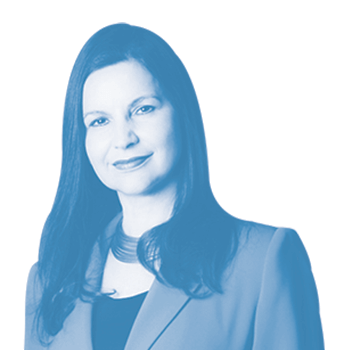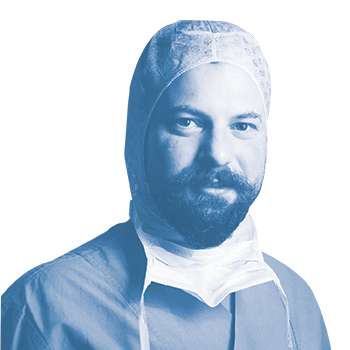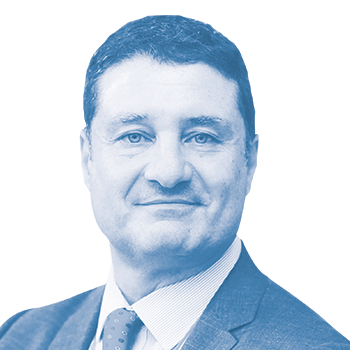
I think one of the biggest advantages with adjustable lens technologies would be improved surgeon confidence. Right now, potential problems down the road may limit the surgeon’s willingness to recommend what they ultimately think will give their patient the best chance of a full range of vision. Indeed, surgeons can be very cautious about which patients they recommend a multifocal lens to – and for good reason: surgeons don’t want unhappy patients. Nor do they want to perform IOL exchanges because of the high chance of complications. But with an exchangeable or adjustable platform, the risk is lowered and the conversation with the patient can be very upfront. Being able to provide the patient with a recommendation, and reassurance that, if they are unhappy with their lens, it can be exchanged or adjusted will make the dynamics of the surgeon-patient conversation easier – and improve surgeon confidence in trying to provide the best vision for patients.” Gary Wortz, Ophthalmic Surgeon at Commonwealth Eye Surgery, and Chief Medical Officer, Omega Ophthalmics, Lexington, KY, USA.
“I believe that the advent of an adjustment procedure that is simple, non-invasive, can be performed in or using different lenses, is reversible, and has the possibilities of multiple and different types of adjustments will certainly make the clear lens exchange procedure extremely popular.” Liliana Werner, Professor of Ophthalmology and Visual Sciences; Co-Director, Intermountain Ocular Research Center; John A. Moran Eye Center; University of Utah, UT, USA.

“I believe adjustable lens technologies are the future to correct for refractive error after lens surgeries. Currently, light adjustable technology is very promising, but it can be time consuming for the patient. A laser-based technology to change the refractive power of the IOL for sphere and cylinder might be best. My wish would be a solution that allows us to modify the IOL not only for spherical and cylindrical powers, but also to correct for presbyopia with the ability to choose from different optical properties, such as modifying aberration, implementing diffractive or refractive profiles, while still being able to reverse the effect for optimal safety and efficiency for our patients.” Florian Kretz, CEO of Augenärzte Gerl, Kretz & Kollegen; Lead Surgeon, Augentageskliniken Rheine & Greven; Consultant & Research Coordinator of The International Vision Correction Research Center Network (IVCRC.NET), University of Heidelberg; and CEO of the NGO Augenärzte Für Die Welt GmbH, Germany.

“It’s exciting and daunting to think about the impact that different forms of adjustable lens technologies will have on lens-based surgery in the not-so-distant future. Between refractive indexing with a femtosecond laser or a UV-light adjustable technology, a great opportunity will exist for surgeons to meet patients desires for their visual needs. Our surgical diagnostics, biometry and advanced IOL formulas already allow surgeons to achieve >90 percent refractive predictability, when carefully done. But, these newer technologies should only help refine all surgeons to more accurately achieve predicted refractive targets. It also intrigues me to think that refractive indexing will help our patients by potentially addressing the unwanted effects of current advanced-technology IOLs, including disruptive night vision issues, incorrect toricity magnitude and/or meridian, or adjusting the ‘sweet spot’ and defocus curve for near vision needs.” Elizabeth Yeu, Assistant Professor at Eastern Virginia Medical School and Cornea, Cataract and Refractive Surgeon with Virginia Eye Consultants, VA, USA.

“I think that the ‘Holy Grail’ of IOL technology will be a perfect accommodating lens that provides great quality optics, and functions as close as possible to what nature provided us when we were in our youth in terms of focus and accommodation. If it is an artificial lens technology, having the ability to adjust that technology in the patient’s eye through a minimally invasive short procedure would also provide surgeon confidence.” Ralph Chu, Founder and Medical Director of Chu Vision, Bloomington, MN, USA.

“Cataract surgery is increasingly becoming a refractive procedure. Implantation of new aspheric, multifocal or toric IOL designs is only truly effective when postoperative emmetropia is achieved. However, despite advances in IOL power calculation, residual refractive errors still occur, a major concern for both patient and surgeon. Secondary procedures for correcting residual refractive errors carry additional burden, making the possibility of adjusting the optical power or customizing the primarily implanted IOL an appealing alternative. Several options allow this possibility: modular lenses, the light adjustable lens and refractive index shaping. Future developments in adjustable lens technology may allow further advances, such as correction of higher-order aberrations, all in a noninvasive manner. In fact, IOL customization may become the standard for cataract surgery.” Tiago Ferreira, ophthalmic surgeon, Hospital da Luz, Lisbon, Portugal.

“Despite all of the remarkable advances that are occurring in biometry and IOL calculation formulas, I believe that we will always encounter refractive surprises—and patients who want them corrected. An accurate, safe, noninvasive way to modify IOL power in vivo will be a game-changer now and for the foreseeable future. I am particularly attracted to methods that can be applied to any IOL material, as this will open up this option to the millions of ametropic pseudophakes who desire better uncorrected vision.” Doug Koch, Professor and Allen, Mosbacher, and Law Chair in Ophthalmology, Cullen Eye Institute, Baylor College of Medicine, Houston, TX, USA.

“Adjustable lens technologies may revolutionize today’s concepts related to accuracy and precision of refractive outcomes after cataract/refractive lens exchange surgery. But not only do they offer the possibility to adjust large and small refractive surprises, at an almost-neglectable surgical risk, there is a lot more that these technologies could achieve. In theory, changing the refractive properties of an already implanted IOL may allow to add or cancel multifocality, change asphericity, compensate for wavefront aberrations, just to highlight some of the additional advantages. Patients may have the possibility of experiencing different visual scenarios and change them according to their real-time, real-life preferences. There are at least five different technologies I am aware of, and most of them involve proprietary IOL materials and dedicated laser sources to change their optical properties. Instead, the one looking more appealing and promising to me involves the use of femtosecond laser technology to reshape any hydrophobic IOL, regardless to the brand. I like this idea because surgeons may still continue using their preferred IOL model.” Francesco Carones, Medical Director, Carones Ophthalmology Center, Milan, Italy.

